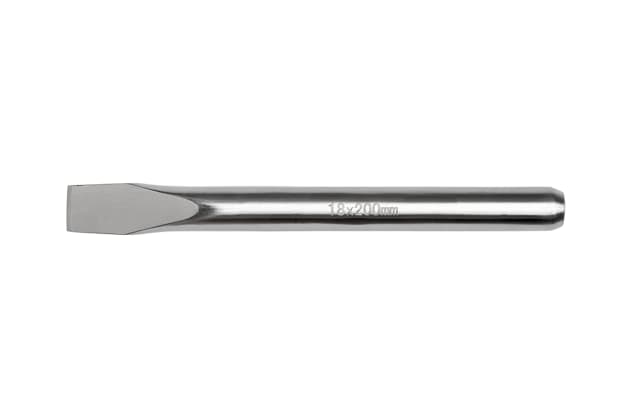- Published 7 Mar 2023
- Last Modified 29 Aug 2023
- 8 min
A Complete Guide to Chisels
Our guide explains the different types of chisel, how to use them, and which is best for particular jobs.

What are Chisels?
Chisels have been used in various forms for thousands of years. However, despite the variety of different types, the basic use of a chisel remains the same.
This hand-held tool features a distinctive cutting edge which is purpose-made for carving and cutting hard materials such as wood, stone, and metal. Chisels are key components in many workshops and toolkits and they are most commonly used in woodworking and masonry applications by professionals and hobbyists alike.
Chisels can be made from a wide range of materials including chrome, vanadium, steel and forged steel. Smaller chisels are particularly well-suited to intricate woodworking, while larger chisels are ideal for the removal of large sections of wood.
Types of Chisel
There are multiple different types of chisel, each best suited to varying applications. We have detailed some of the most common chisel types below.
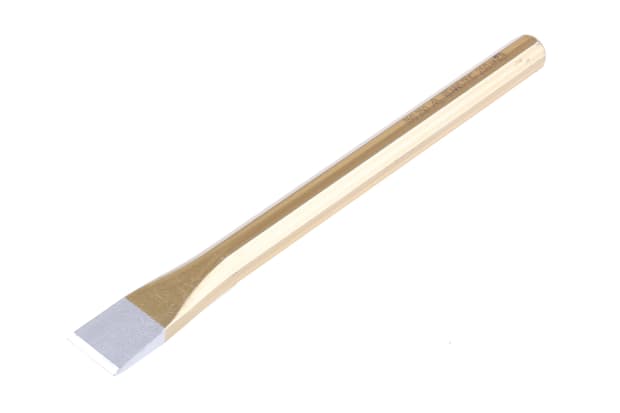
Brick Chisels
Brick chisels, also known as bolster chisels, are specifically designed for cracking rather than cutting through hard materials. They feature a wide blade that allows for the effective cracking of wide surfaces such as masonry blocks.
These chisels are relatively easy to use, provided that the blade is kept flat during the cracking process. Although this isn’t always the case, they commonly feature moulded handguards, meaning that they can be held securely when in use.
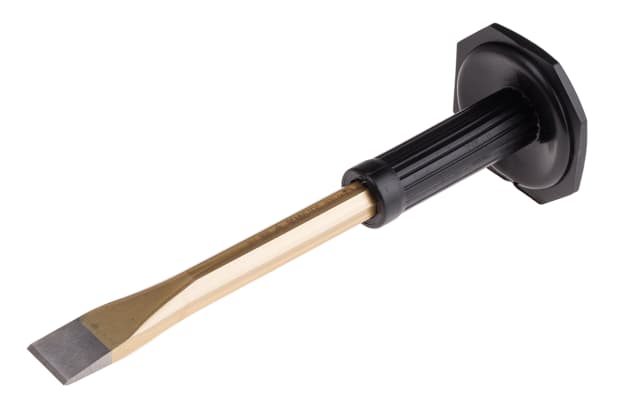
Masonry Chisels
Mason’s chisels are ideal for cutting bricks, cement blocks, and cinders. They can also be used for applications such as removing excess mortar. Stonemasons’ chisels feature dull heads for breaking and wedging materials. This type of chisel also includes a handle to protect the user, as these tools are relatively heavy.
Masonry chisels are often attached to hammer drills or jackhammers and used in the process of demolition. Hydraulic rams or falling weights may be used for heavy-duty chiselling.
Concrete Chisels
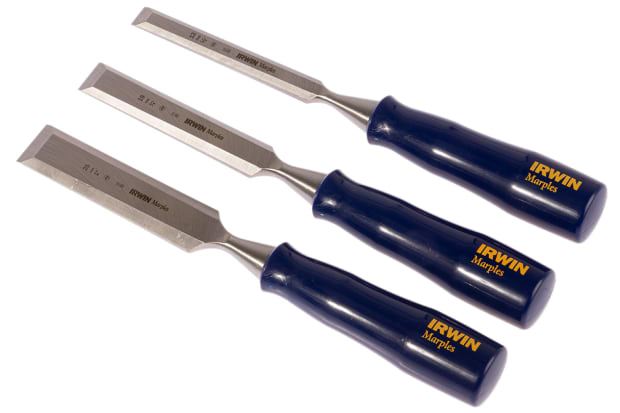
Concrete chisels are commonly used to make precision cuts through concrete. These chisels typically feature a handle and a strong bevelled edge blade which will cut through concrete with the application of force from a hammer or mallet.
How to Use a Concrete Chisel
The procedure for chiselling concrete is as follows:
- Loosely grip the chisel, carefully positioning the point against the area of concrete you want to extract
- Firmly grip a small sledgehammer or mallet and tap the head of the chisel with reasonable force. Continue using the point of the chisel to chip away the concrete
- Position the chisel so the full width of the blade rests against the concrete, with the bevel parallel to the surface
- Continue striking the head of the chisel with the hammer or mallet until the desired amount of concrete has been extracted
Cold Chisels
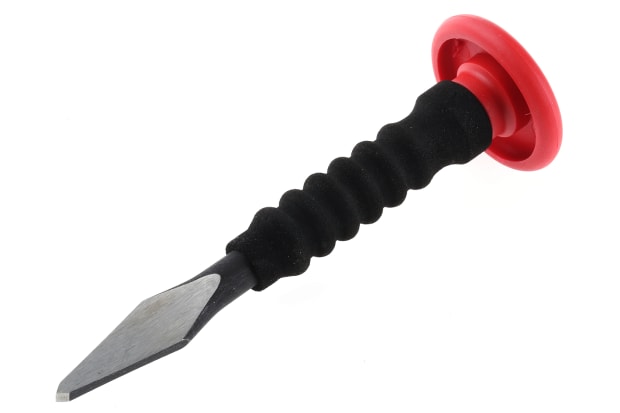
Made from tempered steel, cold chisels are specifically made for cutting cold metals. These are metals which are not heated with heating torches, forges, or other devices. As cold chisels are used in the formation of metal, they have a less acute angle to the sharp section of the blade than a standard woodworking chisel. This means that the cutting edge is strong, but not as sharp. Most cold chisels are made from steel, but some tools are manufactured from beryllium copper, particularly in preparation for situations involving the use of non-sparking tools.
The principal types of cold chisel include:
- Flat Chisel – the most commonly used variety for cutting bars and rods to reduce surfaces and cut sheet metal
- Cross Out Chisel – purpose-made for cutting grooves and slots, these chisels feature a narrow blade positioned directly behind the cutting edge for clearance
- Round Nose Chisel – these chisels are used for cutting semi-circular grooves for oil ways in bearings
- Diamond Point Chisel – these chisels are used for removing unwanted materials and debris from corners and other hard-to-access areas
Woodworking Chisels
Woodworking chisels can be used for a variety of purposes, including the production of fine furniture. However, care should be taken as there are multiple subtypes of woodworking chisel available and it is important to select the right type for your requirements.
Smaller varieties of woodworking chisel are ideally suited to crafting intricate wood detailing, whereas larger tools are preferred for removing sizeable areas of wood. It is common for tools of varying sizes to be used on a single project as large chisels can be used initially before smaller tools are used as the project progresses. Additionally, firm chisels can be used for working into a pocket of wood. These chisels feature 90-degree flat sides and are ideally suited to honing into tight areas.
It is advisable to choose woodworking chisels featuring handles with metal striking caps for extended life and resistance to repeated strikes. Bench chisels are among the most commonly used varieties, while socket handle chisels are more durable and can sustain heavy blows without incurring damage. If you are working with either socket or tang-handled chisels, you should make sure to use a wooden mallet for striking the chisel.
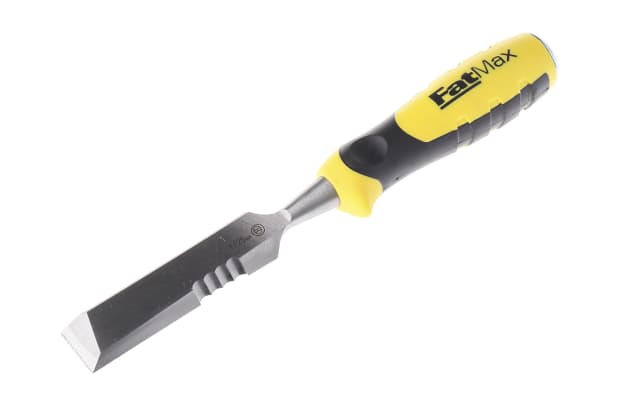
Some of the principal types of woodworking chisel include:
- Bench Chisels – suitable for a wide range of applications, these chisels can be kept within easy access on the bench for chopping and paring wood
- Mortise Chisels – these chisels feature thick, rigid blades which are ideal for making straight cuts and tapered size for the production of mortises and other joints
- Paring Chisels – these chisels are typified by their long blades which are ideal for cleaning grooves and removing material from hard-to-reach areas
How to Use a Chisel
It is important to choose the type of chisel best suited to the work that you will be carrying out. Additional factors such as the chisel size and blade shape should also be taken into consideration.
Work should begin with a general inspection of the chisel to ensure that it is in the best possible condition. A square can be used to check the flatness of the blade. It may be necessary to sharpen the chisel to ensure that it is well protected throughout the process.
Once the tool itself is in order, a ruler and carpenter’s square can be used to measure the area of the surface and depth to be removed during the chiselling process. You should then proceed to clamp the wood, ensuring that it will remain fully stable when being chiselled.
To make a small indentation when working with wood, the chisel should be positioned at a 90-degree angle. A wooden mallet can then be used to strike the chisel and carve out the desired amount of wood. The chisel should be held with the bevelled edge closest to the wood.
Next, proceed to run the chisel following the wood grain. The scored area should be chipped away until the wood inside the outline has been extracted to the required level. Care should be taken to strike away from the body and only extract a small amount of wood with each strike.
Paring chisels are well suited to woodworking tasks requiring a high level of intricacy and precision. The paring process involves the gradual smoothing and removal of surface layers. Once the wood has been firmly secured on the workbench or vice, one hand should be kept on the chisel’s blade with the other on the handle. It is common to use your non-dominant hand to secure and guide the chisel. The bottom of the chisel should be kept in contact with the wood throughout this process. The cuts should be repeated at a gradual rate until the desired amount of wood has been extracted.
Masonry chisels can be used for scoring, trimming, or shaping materials such as brick and stone. It is important to select a masonry chisel of an appropriate shape and width for the particular task at hand. Before beginning work, it is recommended to mark the material to be chiselled with pencil or paver’s chalk. Scoring marks can then be inserted along this line in preparation for chiselling. The masonry chisel should be set at a perpendicular level of 90 degrees for precise entry into the brick or stone. The mallet can then firmly strike in the centre of the scoreline, repeating the process until there is an even break.
Regardless of the particular type of chisel in question, it is recommended to keep a honing stone to hand, so the chisel can be sharpened as and when required. Additionally, the bevel can be sharpened and refined with the use of a grinder. Once this has been completed, it is possible to proceed to hone and polish the chisel blade.
Popular Brands
Facom
From cold chisels to general-purpose chisels, browse the full range of chisels from leading brand Facom.
RS Pro
Browse the full range of chisels available from RS Pro, our in-house brand, and shop online today.
Bahco
Shop the full range of Bahco chisels with RS Components and discover the ideal tool to meet your requirements.
Irwin
Irwin chisels are available in a range of different types and sizes to suit varying projects. Shop online today.


